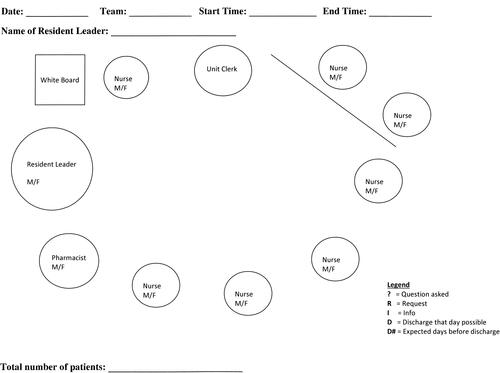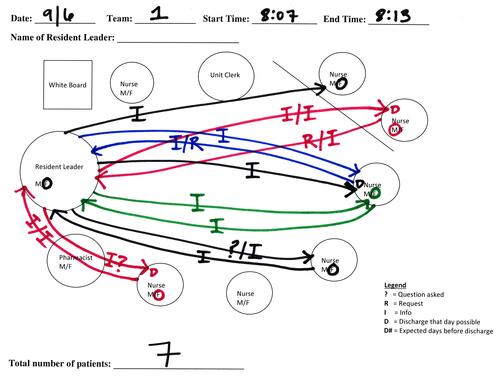Figures & data
Figure 1 The sociogram used to document the flow and frequency of team-members information exchange, questions, and requests. The sociogram depicts the inpatient nursing station where the huddle took place. Circles represent participant positions within the huddle. The diagonal line represents the window at the nursing station.

Table 1 Sample Sociomatrix with Data from Three Sociograms. We Included Up to Six Interactions per Patient Volley in Each Sociomatrix
Figure 2 Sample of one completed sociogram. Using a multi-colored pen, we captured the first interaction by drawing a line from the “resident” circle to the “nurse” circle. We captured the direction of communication with an arrow and annotated the type of communication as a question (?), a request (R), or information (I). If the nurse responded to the resident, a new line was drawn using the same pen color from the nurse circle back to the resident circle. We used the same process to capture direction of communication and type of communication. We documented each interaction between participants and truncated the lines by using a slash instead of the full line arrow. If a resident or nurse provided multiple forms of communication during the same interaction, symbols were written together without a slash.

Table 2 Themes from Analysis of Resident and Nurse Focus Groups Aligned with Representative Quotes
